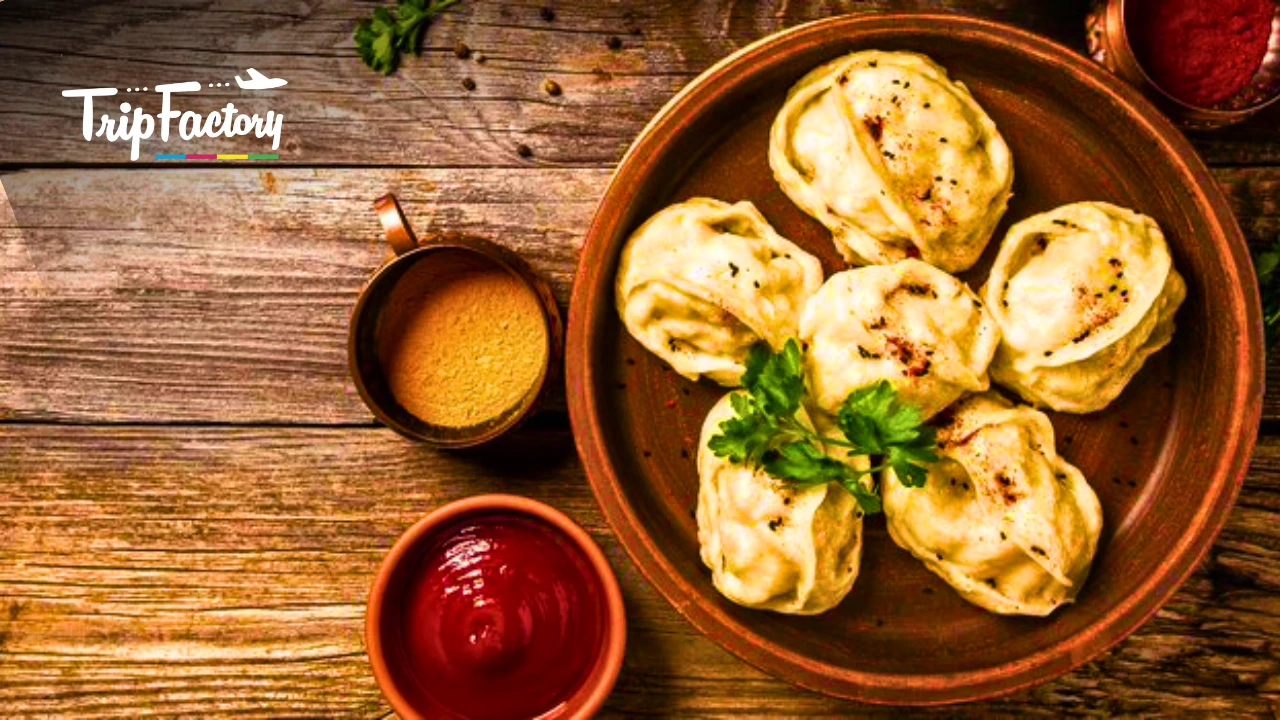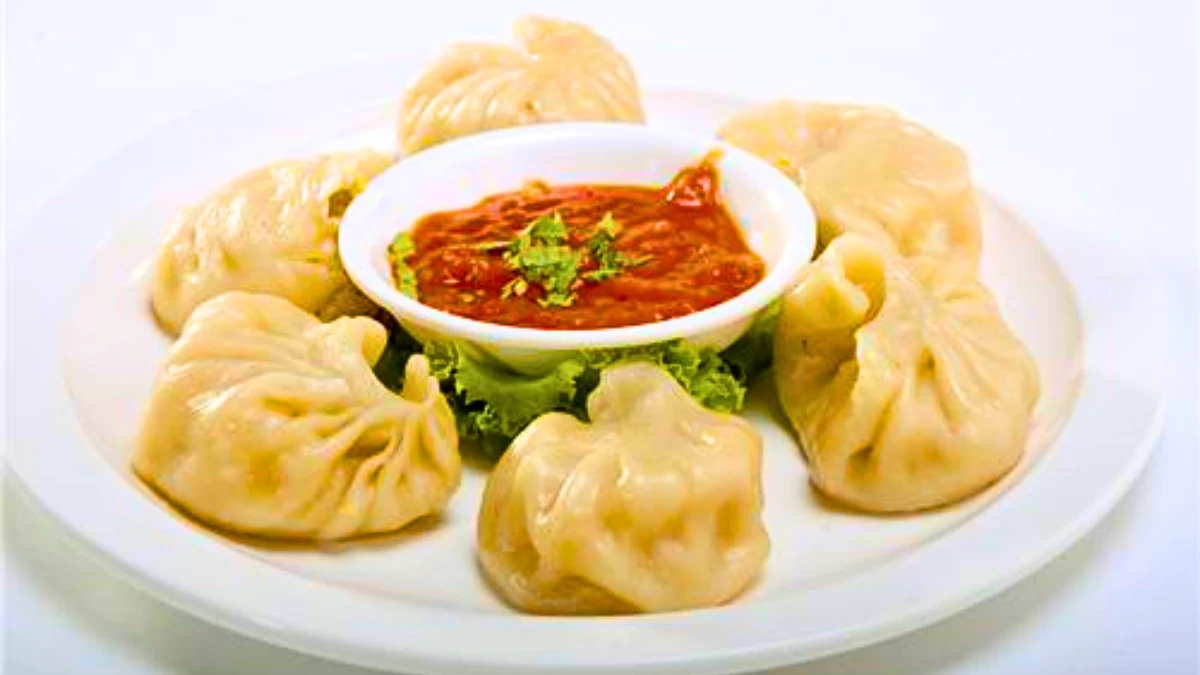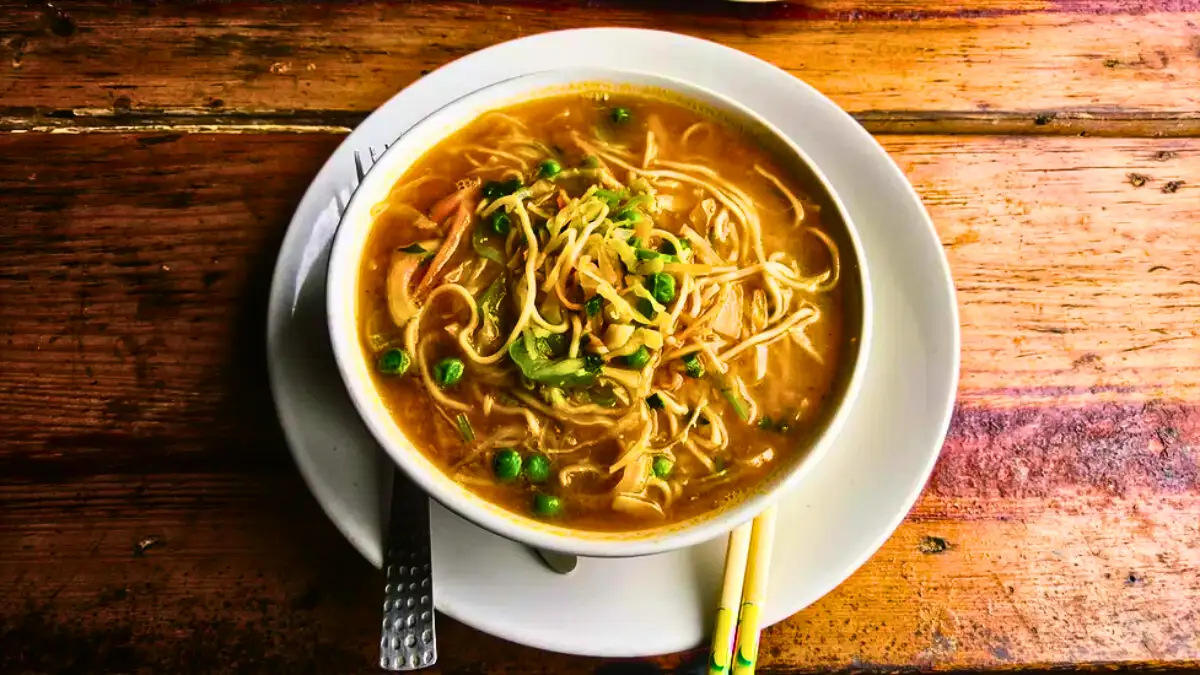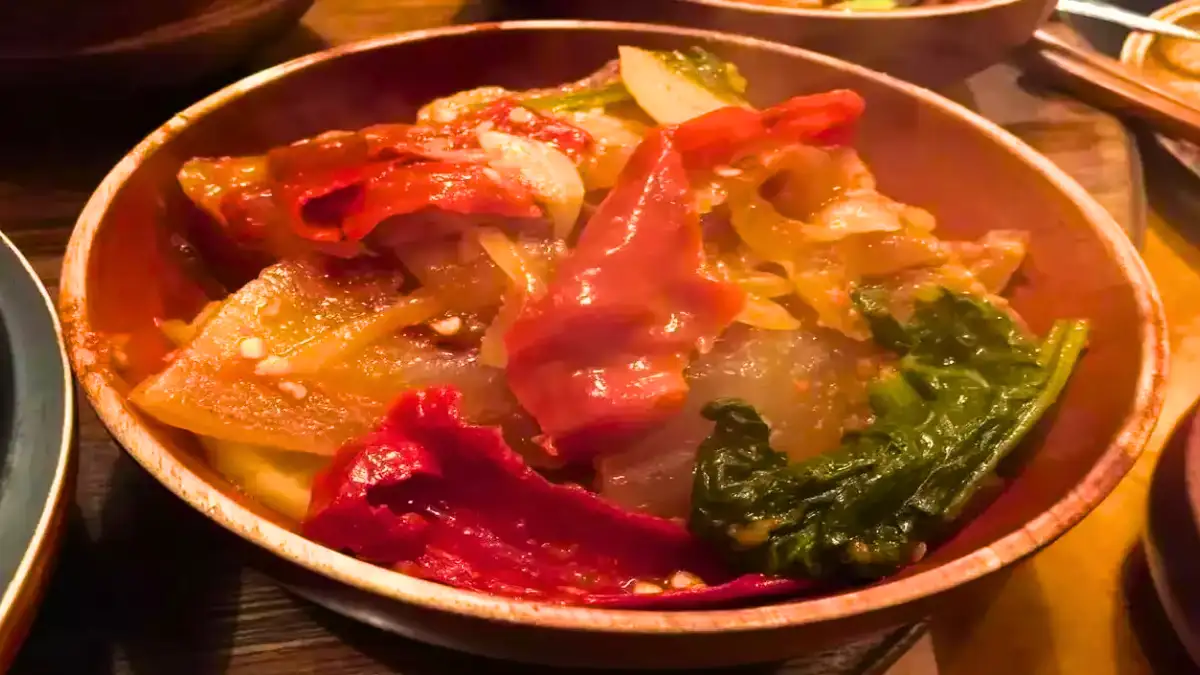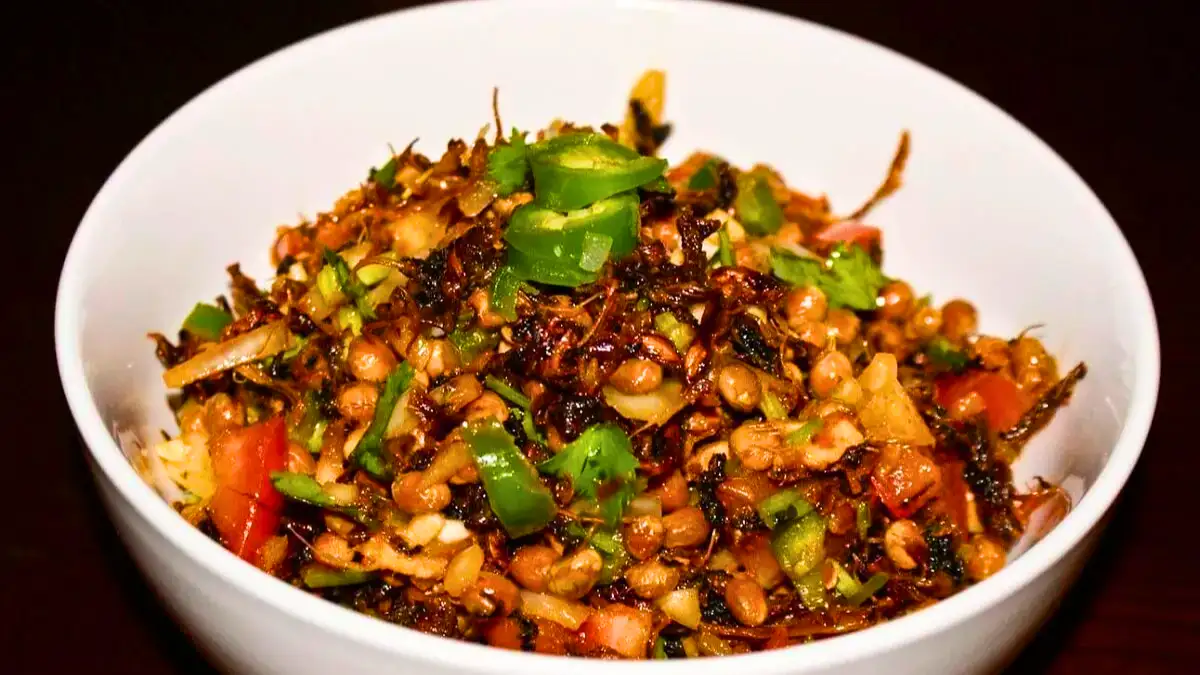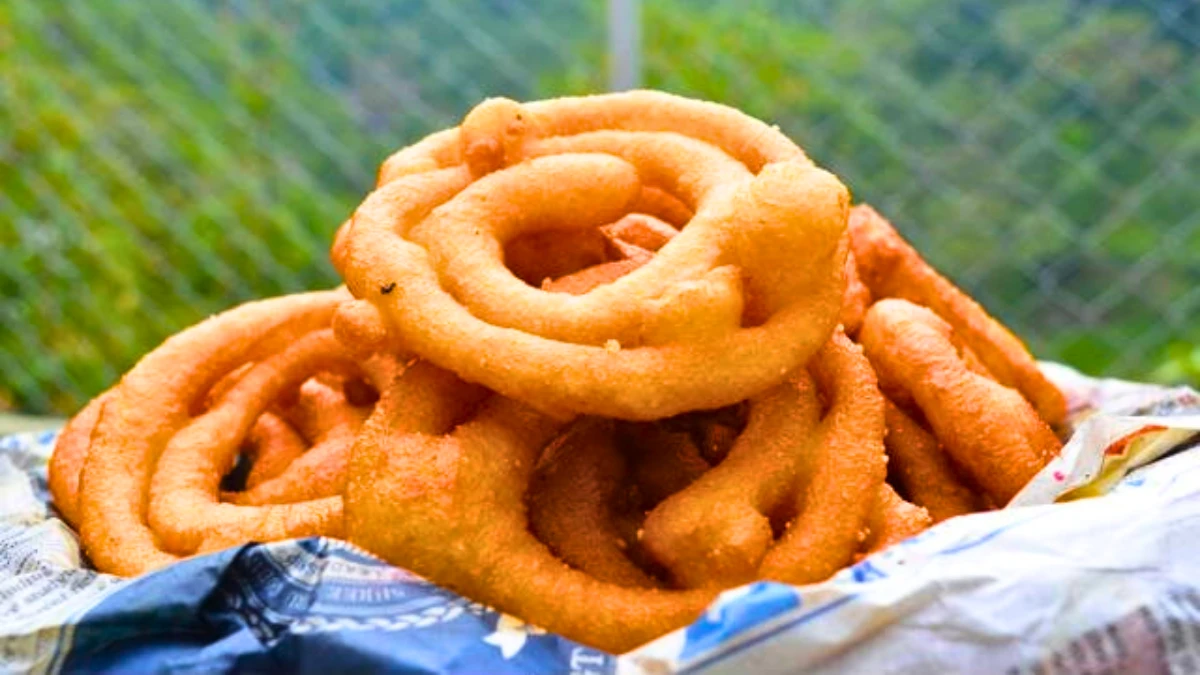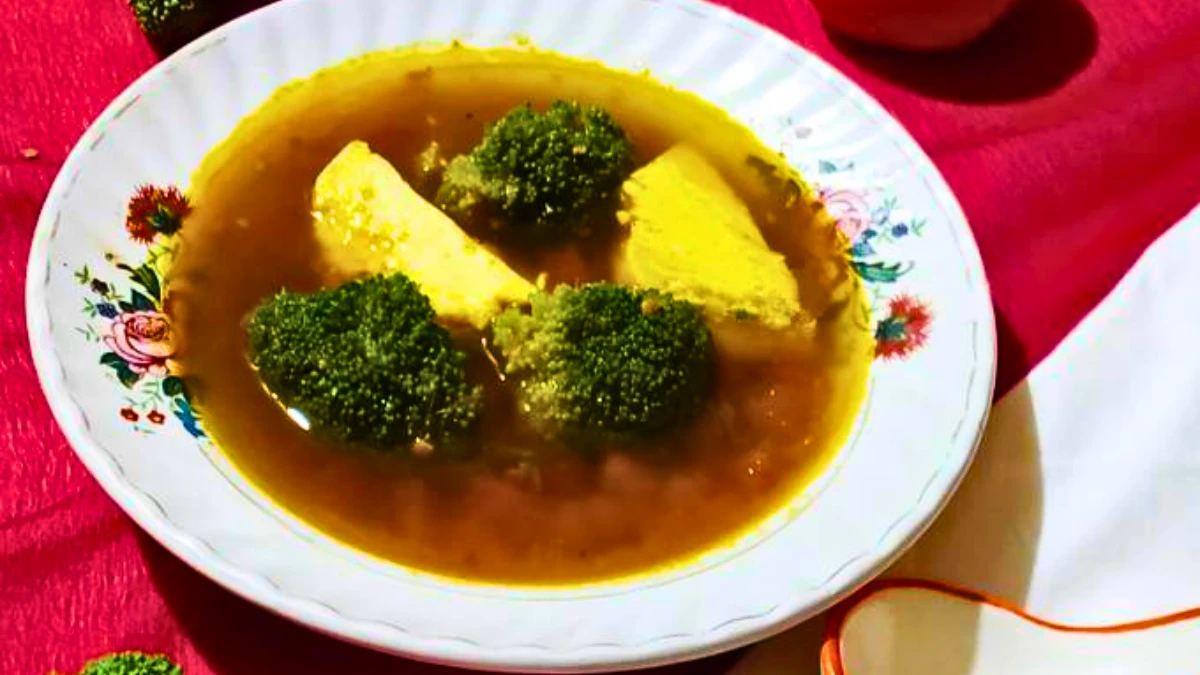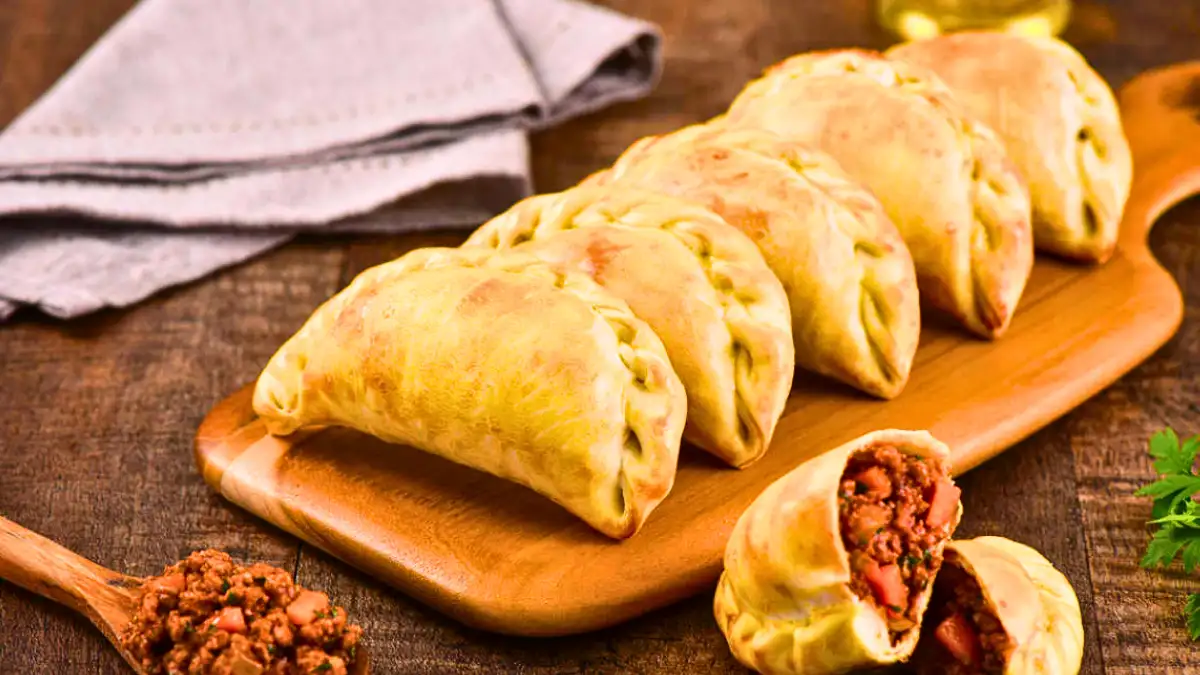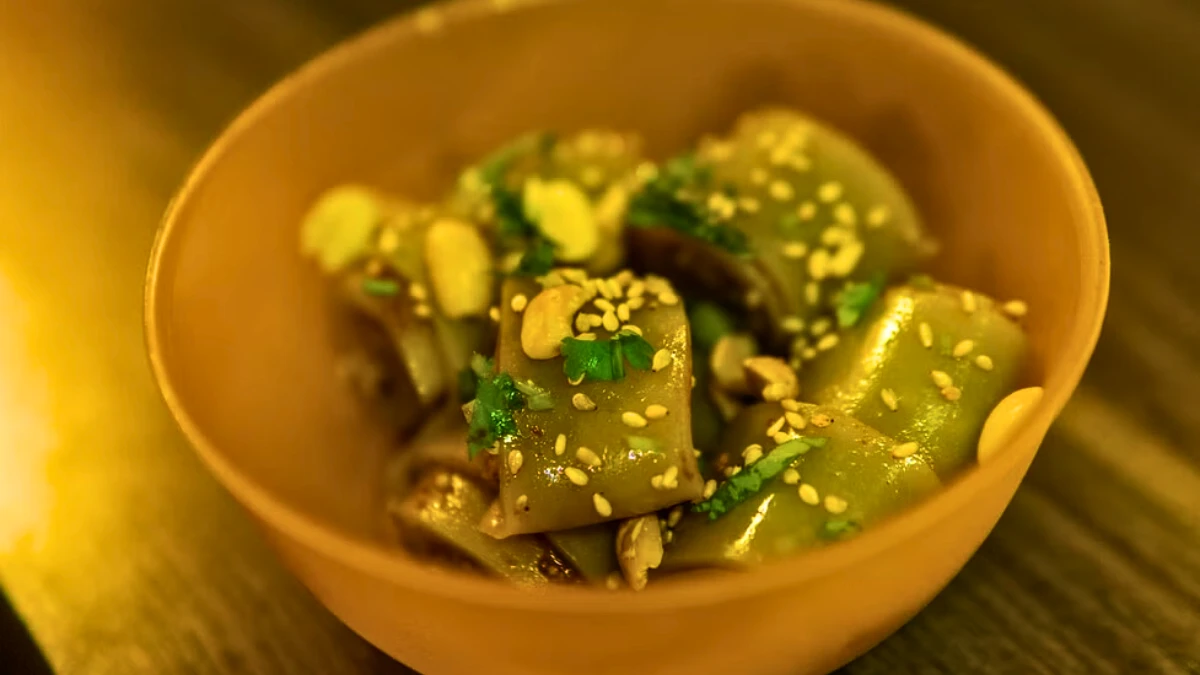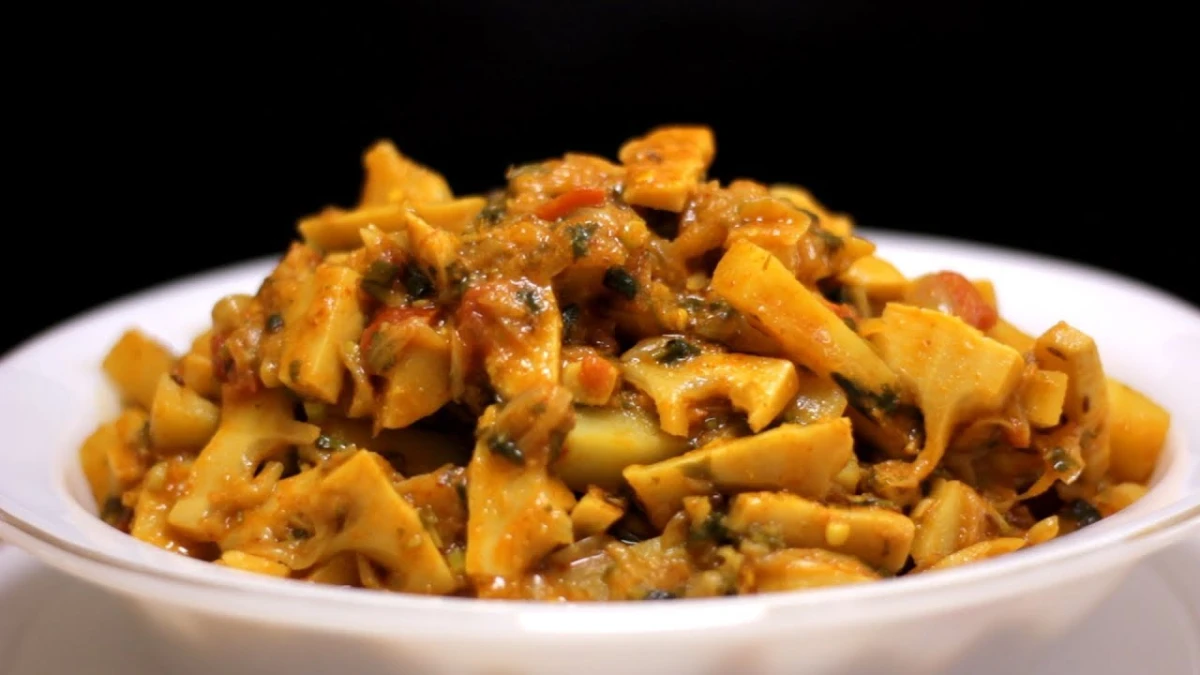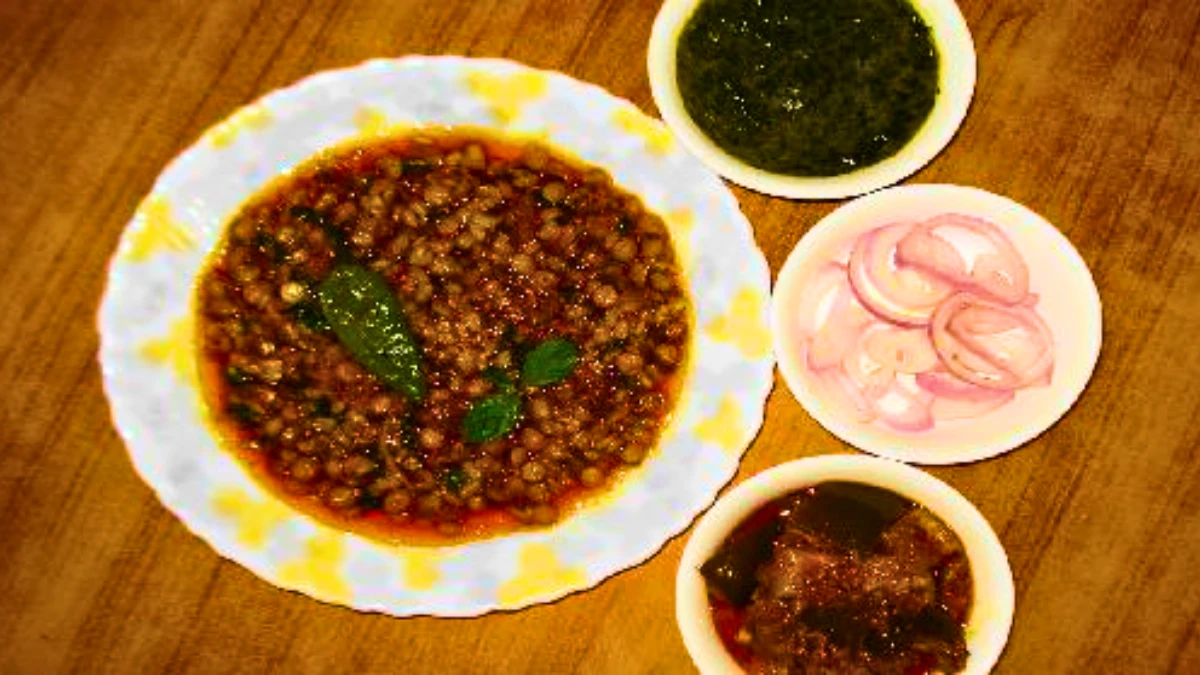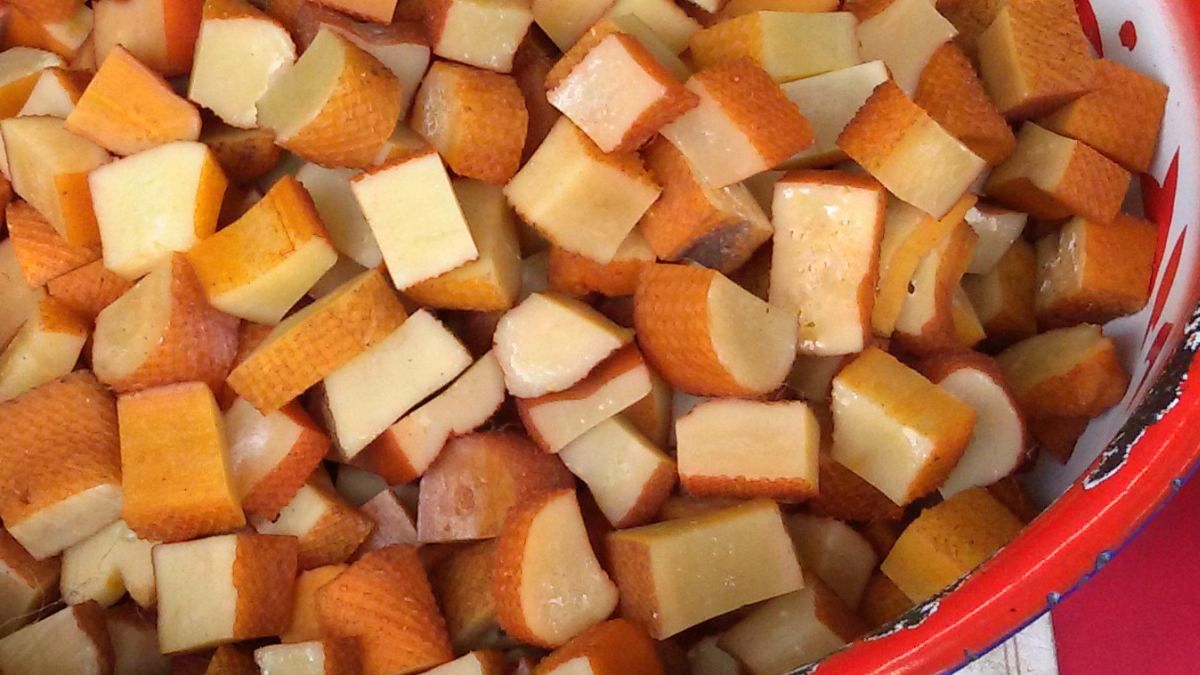Sikkim, with its rich cultural heritage and unique location in the Himalayas, offers an extraordinary food scene that combines Tibetan, Nepali, and local influences. Exploring the traditional foods of Sikkim is a journey into the heart of the region’s culture and history, where each dish tells a story of its people, landscape, and customs.
From momos, the beloved dumplings, to gundruk, a fermented leafy green delicacy, Sikkim’s food represents the warmth and simplicity of the region. Trying these dishes should be a key reason to travel to Sikkim as it offers an authentic experience far beyond regular sightseeing.
Table of Contents
Why Travel to Sikkim for Its Traditional Foods?
While Sikkim boasts breathtaking landscapes, its culinary offerings add another dimension to your travel experience. Each of these foods ties directly into the lifestyle and history of Sikkim’s people. Whether you’re savoring thukpa in a cozy mountain café or enjoying sel roti at a local festival, these dishes are deeply rooted in the region’s culture. Sikkim is the ideal destination for food enthusiasts looking to discover something new, authentic, and truly local.
1. Momos
Let’s begin with a staple of Sikkimese cuisine: momos! A must-try in Sikkim are these delicious dumplings, which originated in Tibet and later made their way into Nepalese cuisine. Momos are filled with perfectly steamed or fried vegetables or minced meat.
This well-known Sikkim dish, which is served with a hot red chili sauce, is a favorite among both vegetarians and non-vegetarians. Momos are available at a variety of well-known Gangtok restaurants, including both steamed and fried food.
2. Thukpa
A popular dish from Sikkim, thukpa is a soothing noodle soup. Noodles, veggies, or meat are cooked in a soup that is flavored with onions, garlic, ginger, and other spices. A variety of foods, including chicken, beef, or pig, may be added to thukpa, and it’s often topped with fresh herbs like cilantro or green onions. In Sikkim, this filling soup is consumed as a main food to keep warm and provide sustenance throughout the chilly winter months.
3. Phagshapa
For those who like pork, here’s a popular dish in Sikkim: pagshapa! This classic recipe is slow-cooked to perfection and includes dried red chilies, radishes, and strips of grab fat.
Non-vegetarians should not miss Phagshapa, which embodies Sikkim’s culinary legacy. Even die-hard meat fans should consider this well-known dish which is surprisingly made without oil and stresses the value of veggies and protein as a healthy option.
4. Gundruk
A traditional Nepali meal called gundruk is prepared using fermented mustard or radish leaves. The leaves have a tangy, somewhat sour flavor after being sun-dried and fermented for many days.
When added to soups, stews, or stir-fries, gundruk adds a distinct flavor and smell. Because of the fermentation process, it is considered to provide health advantages and is an excellent source of nutrients. Both residents and visitors to Sikkim love gundruk, a traditional dish in the region’s cuisine.
5. Sel Roti
In Sikkim, sel roti a deep-fried rice bread fashioned like a ring—is a favorite breakfast and snack food. It’s prepared with milk, sugar, and rice flour. Pouring the batter into the hot oil in a circular motion creates a crispy, golden-brown ring. Sel roti is often eaten with Aloo Sadeko (spicy potato salad), spicy chutney, or yogurt on the side.
This tasty and sweet dish is often made for festivals and special events, and it may be found in neighborhood markets and street food stands.
6. Chhurpi Soup
Traditional Chhurpi cheese is the key element of Chhurpi Soup, another Sikkimi specialty. This regional specialty also includes paanch phoran, a blend of five spices.
This hearty soup is full of locally grown pulses and veggies, making it a filling and healthy meal that’s ideal for the winter. It’s a popular dish in Sikkim and a must-try for vegetarians. It’s garnished with cool coriander leaves.
7. Sha Phaley
Originating in Tibet, Sha Phaley is a famous snack in Sikkim cuisine. It is made out of deep-fried bread that has been filled with cabbage, ground meat (often pig or beef), and a blend of spices like ginger, garlic, and Sikkimese pepper.
Before being deep-fried till golden brown, the dough is rolled out, filled with the contents, and folded into a semi-circular or triangular form. Sha Phaley is a tasty and substantial snack that is often eaten with spicy sauce or chutney because it is crispy on its outside and juicy on the inside.
8. Laping
Laping is a mung bean flour-based spicy cold noodle dish. It is combined with water and baked to create a dough that is sticky and thick. After that, it is sliced into noodles, rolled thin, and chilled. Cold laping is served with a hot sauce consisting of vinegar, garlic, chilli paste, soy sauce, and Sichuan pepper.
It’s topped with thinly sliced cucumber, crumbled peanuts, and fresh herbs. Lapping is well-known for being consumed as a light meal or as a refreshing snack, particularly in the summer months.
9. Masauyra Curry
This is a classic Sikkim dish consisting of lentil dumplings served in a hot curry sauce with sun-dried veggies. Sun-drying vegetables like radish, pumpkin, or cauliflower helps to preserve and enhance their flavors. Masauyra, the name for the dumplings, are created with split black gram, or urad dal, and are further dried in the sun.
After that, the veggies and the Masauyra are both cooked in a flavorful curry sauce that is created with tomatoes, onions, and other spices. This meal, which is often eaten with rice, is a wonderful way to savor the seasonal food of Sikkim’s preserved flavors.
10. Bamboo shoot curry
Tender bamboo shoots are used to make the curry, which is a well-known Sikkim dish. To make a tasty curry, the shoots are chopped and cooked with tomatoes, onions, and a blend of spices. The dish’s distinct flavor and texture make it popular when served with rice. Both residents and visitors like bamboo shoot curry because it is nutrient-dense and is said to offer many health advantages.
11. Sinki
Sinki is a Sikkim-specific traditional dish. It tastes acidic and sour and is made from fermented radish taproot. It also has a strong, pungent smell. Radish taproots are washed, ground, and then put into an earthen pot or bamboo container to make Sinki. After sealing, the container is buried to ferment for a month. Because of its probiotic content and fermentation process, sinki is often used as a seasoning in soups, stews, and side dishes. It is also said to have many health advantages.
12. Kinema
A traditional Sikkim dish of fermented soybeans is called khinmeh. After being cooked, drained, and fermented for many days, soybeans are left with a sticky, strong combination. Because of its high protein, vitamin, and mineral content, kinesina is a wholesome side dish. It is often used as a curry foundation or as an accompaniment to rice. Kinema has a distinct flavor and perfume that may take some getting used to.
Traditional Foods of Lachung and Lachen
When visiting the enchanting villages of Lachung and Lachen, you’ll have the opportunity to savor a variety of traditional delicacies unique to this Himalayan region. Here’s what you can expect to find on the menu:
- Chhurpi: This local delicacy is a type of yak cheese, known for its chewy texture and distinct flavor. It’s often enjoyed as a snack or used in various dishes, both in its soft and hardened forms.
- Yak Butter Tea: A staple beverage in the area, yak butter tea offers a rich and savory taste. Made from butter derived from yak milk, salt, and tea leaves, it provides warmth and energy in the chilly climate.
- Barley-based Dishes: Barley serves as a foundational ingredient in many traditional meals. Look for dishes like tsampa, a roasted barley flour often mixed with tea, butter, and sugar for a hearty treat.
These foods not only provide a taste of local culture but also highlight the resourcefulness of the communities living in these remote and beautiful regions.
Conclusion
Exploring Sikkim’s traditional foods offers more than just a meal; it’s a way to connect with the region’s rich heritage and warm-hearted people. Whether you’re trying iconic dishes like momos and thukpa, or indulging in more unique delicacies like kinema or chhurpi, Sikkim’s cuisine promises an unforgettable experience.
At TripFactory, we offer curated travel packages that allow you to enjoy the best of Sikkim’s food culture along with its breathtaking scenery. From guided food tours in Gangtok to rural homestays where you can learn to prepare traditional dishes, our packages are designed to provide an immersive culinary journey. Let us take care of all the details while you focus on savoring the rich flavors and experiences that Sikkim has to offer.
Frequently Asked Question
What are the must-try traditional foods in Sikkim?
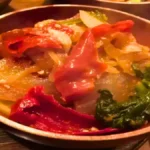
Sikkim’s culinary delights include Momos, Thukpa, Phagshapa, Sel Roti, Gundruk, Sha Phaley, Kinema, and Chhurpi, each showcasing the region’s unique blend of Tibetan, Nepali, and local flavors.
For those exploring Gangtok, some must-try dishes truly capture the essence of the region’s vibrant food scene:
Momos: These steamed or fried dumplings are filled with delicious mixtures of meat or vegetables, making them a quintessential snack loved by locals and visitors alike.
Thukpa: A hearty noodle soup that combines wholesome ingredients, offering a comforting and warm culinary experience, perfect for the chilly weather of Sikkim.
Gundruk: This fermented leafy green dish is often served as a side, adding a tangy and savory depth to meals with its distinctive flavor.
Each dish not only tantalizes the taste buds but also tells a story of Sikkim’s rich cultural tapestry. Whether enjoying the spicy zest of Phagshapa or the crunchy texture of Sel Roti, the food of Sikkim provides a delicious adventure unlike any other.
Where can I find the best traditional Sikkimese food?

The best places to try traditional Sikkimese food are in local restaurants and street food stalls in Gangtok, Pelling, and rural areas like Dzongu. Some popular eateries in Gangtok include Taste of Tibet, The Roll House, and Cafe Culture.
Is Sikkim a good destination for food lovers?

Absolutely! Sikkim is a hidden gem for food enthusiasts. The state offers a variety of traditional dishes made from locally sourced ingredients, offering unique flavors and culinary experiences that differ from other parts of India.
What is the best time to visit Sikkim for a food tour?
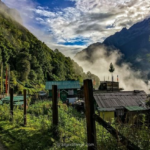
The best time to visit Sikkim for a food tour is during spring (March to May) and autumn (October to November). These seasons offer pleasant weather, and many local festivals take place during these months, allowing you to experience festive foods and vibrant markets.
Is Sikkim’s food spicy?

Sikkimese food is generally mild to moderately spicy. While some dishes like Phagshapa and Kinema have a tangy or savory flavor, they are not overwhelmingly spicy. However, you can ask for adjustments to spice levels based on your preference.
Can vegetarians find good food in Sikkim?

Yes, Sikkim has plenty of vegetarian options. Dishes like Gundruk, Sel Roti, Kinema Curry, and Thukpa have vegetarian variations, and many local eateries cater to vegetarian diets.
Are traditional foods of Sikkim healthy?
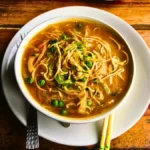
Yes, many traditional Sikkimese foods are healthy, often made with fresh, locally sourced ingredients like vegetables, fermented foods, and lean meats. Dishes like Thukpa, Gundruk, and Sinki are nutrient-rich and wholesome.

